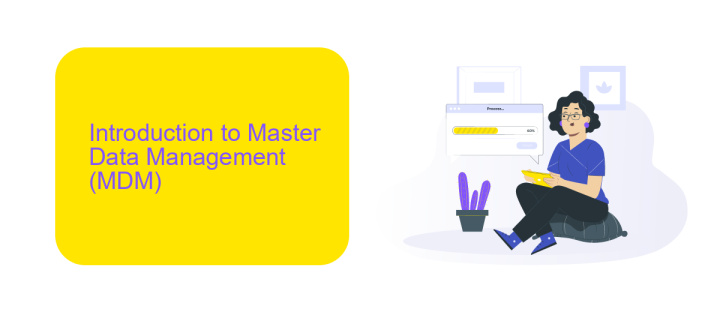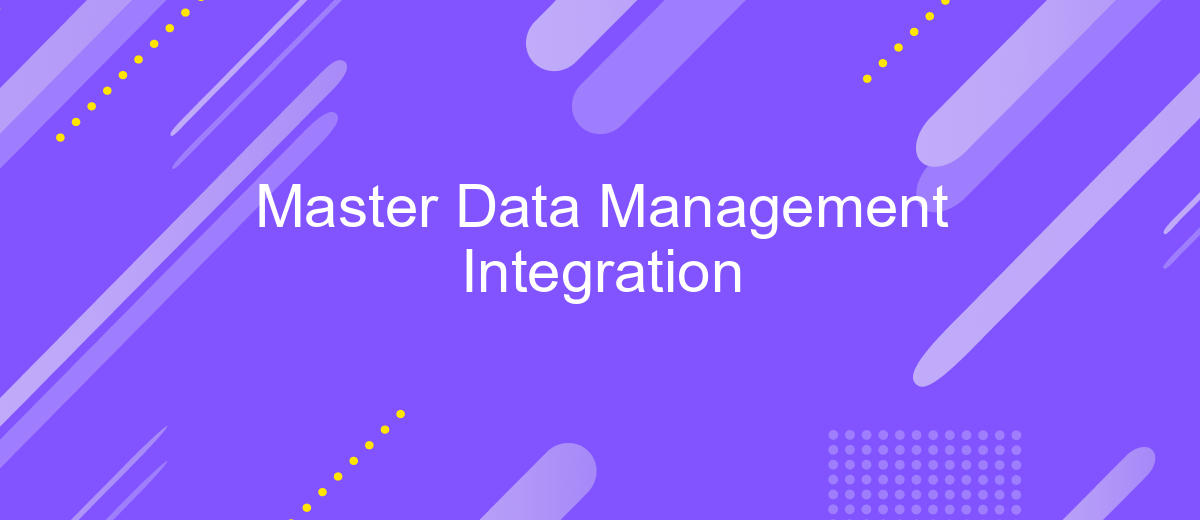Master Data Management Integration
Master Data Management (MDM) Integration is a critical process for organizations seeking to unify and manage their core business data across various systems. By integrating MDM, companies can ensure data consistency, accuracy, and accessibility, which are essential for informed decision-making and operational efficiency. This article explores the key components and benefits of MDM Integration, offering insights into best practices and implementation strategies.
Executive Summary
Master Data Management (MDM) Integration is essential for ensuring that an organization’s critical data is accurate, consistent, and accessible across various systems. By integrating MDM, businesses can enhance data quality, streamline operations, and make informed decisions based on reliable data.
- Improved data accuracy and consistency
- Enhanced operational efficiency
- Better decision-making capabilities
- Streamlined data governance
Services like ApiX-Drive facilitate seamless MDM integration by providing automated workflows and data synchronization between disparate systems. This not only reduces manual effort but also ensures real-time data updates, making it easier for organizations to maintain a single source of truth. Implementing MDM integration with tools like ApiX-Drive can significantly boost an organization’s data management strategy, leading to improved business outcomes.
Introduction to Master Data Management (MDM)

Master Data Management (MDM) is a comprehensive method of enabling an enterprise to link all of its critical data to a common point of reference. This process ensures consistency and accuracy of the data across various departments and systems within the organization. By creating a single, reliable source of master data, businesses can enhance decision-making, streamline operations, and improve data quality. MDM encompasses various practices, including data governance, data integration, and data quality management, to maintain the integrity and usability of the data.
Effective MDM integration is crucial for leveraging the full potential of master data. Tools like ApiX-Drive facilitate seamless integration by automating the data synchronization process between different systems. ApiX-Drive allows businesses to connect various applications and services without the need for extensive coding or manual intervention. This not only saves time but also reduces the risk of errors, ensuring that the master data remains consistent and up-to-date across all platforms. By utilizing such integration services, organizations can achieve a cohesive and efficient data management strategy.
MDM Integration Strategies

Master Data Management (MDM) integration is crucial for maintaining data consistency across various systems and applications. Effective strategies ensure seamless data flow and improved decision-making processes. Here are some key strategies for successful MDM integration:
- Data Synchronization: Ensure real-time or scheduled synchronization of master data across all systems to maintain consistency.
- Data Quality Management: Implement robust data quality tools to cleanse, standardize, and enrich master data before integration.
- API Integration: Utilize APIs for seamless data exchange between MDM systems and other enterprise applications. Services like ApiX-Drive can simplify this process by providing pre-built connectors and automation tools.
- Data Governance: Establish clear data governance policies to define data ownership, access controls, and compliance requirements.
- Scalability: Design the integration architecture to handle growing data volumes and evolving business needs.
By adopting these strategies, organizations can achieve a unified view of their master data, leading to better analytics, improved operational efficiency, and enhanced customer experiences. Leveraging tools like ApiX-Drive can further streamline the integration process, making it easier to connect and automate data flows between various systems.
Benefits and Challenges of MDM Integration

Master Data Management (MDM) integration offers numerous benefits, including improved data consistency, enhanced decision-making, and streamlined operations. By consolidating and harmonizing data from various sources, organizations can ensure that their data is accurate, up-to-date, and accessible across all departments.
However, integrating MDM solutions also presents several challenges. These can range from data silos and legacy systems to the complexity of data governance and the need for continuous data quality monitoring. Organizations must be prepared to address these issues to fully leverage the advantages of MDM integration.
- Improved data consistency and accuracy
- Enhanced decision-making capabilities
- Streamlined business operations
- Challenges with data silos and legacy systems
- Complexity in data governance
- Continuous data quality monitoring
Services like ApiX-Drive can facilitate MDM integration by providing tools to automate data synchronization between various platforms. This reduces the manual effort involved in maintaining data consistency and helps organizations overcome some of the common challenges associated with MDM integration. By leveraging such services, businesses can achieve a more seamless and efficient data management process.


Best Practices for MDM Integration
Effective Master Data Management (MDM) integration starts with a clear understanding of your data landscape. Identify all data sources, their formats, and how they interact within your organization. Establish data governance policies to ensure consistency and accuracy. These policies should include data quality standards, ownership, and access controls. Utilize a robust integration platform like ApiX-Drive to streamline data flows between disparate systems, ensuring real-time synchronization and reducing manual intervention.
Another best practice is to implement a phased approach to MDM integration. Begin with a pilot project focusing on a specific data domain or business unit. This allows for testing and refinement of processes before scaling up. Continuous monitoring and feedback loops are essential to adapt to evolving business needs. Leverage ApiX-Drive’s automation capabilities to minimize errors and enhance efficiency. Regularly review and update your integration strategy to align with technological advancements and organizational changes, ensuring long-term success.
FAQ
What is Master Data Management (MDM) Integration?
Why is MDM Integration important for businesses?
What are the challenges in implementing MDM Integration?
How can businesses automate MDM Integration processes?
What are the key features to look for in an MDM Integration tool?
Apix-Drive will help optimize business processes, save you from a lot of routine tasks and unnecessary costs for automation, attracting additional specialists. Try setting up a free test connection with ApiX-Drive and see for yourself. Now you have to think about where to invest the freed time and money!

